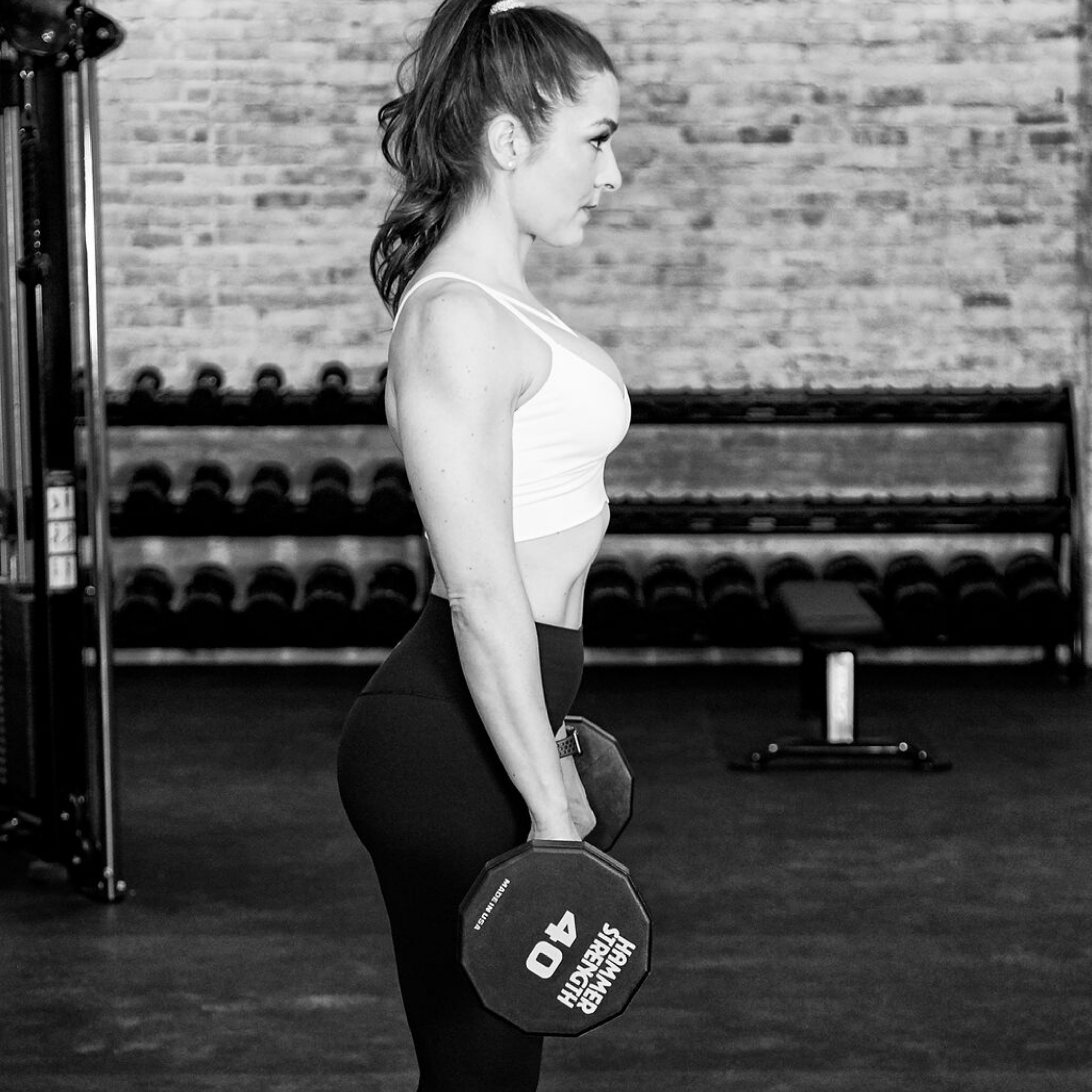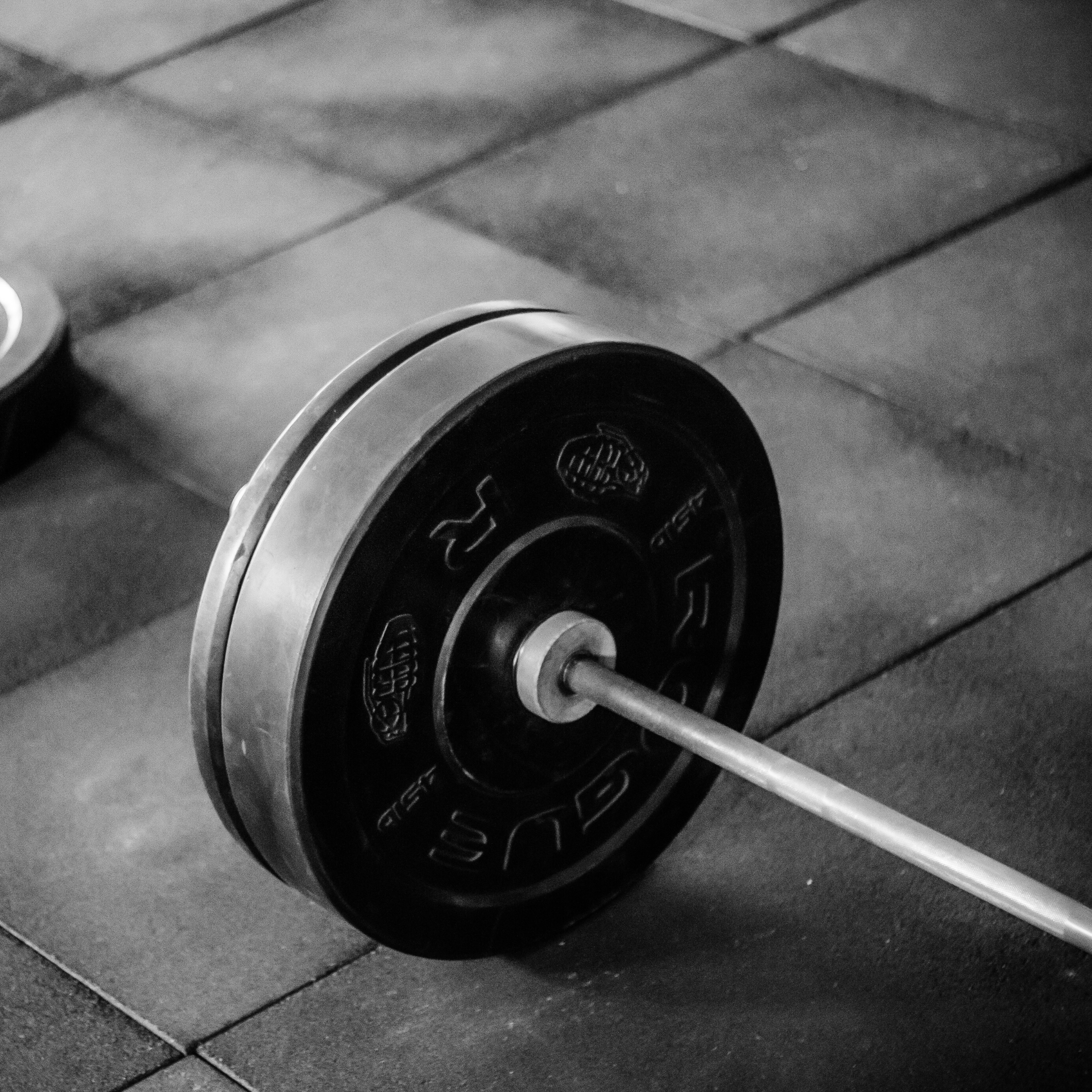WHAT IS A DEADLIFT?
A deadlift is a weight training exercise that uses a loaded bar or barbell which the user lifts off the ground to their thighs and then lowers back down to the ground. Deadlift refers to the lifting of dead weight, such as weights lying on the ground. It is one of the few standard weight training exercises in which all repetitions begin with dead weight. Absolutely no momentum is used.
WHAT MUSCLES DOES IT WORK?
The deadlift works the entire body but focuses on quadriceps, hamstrings, glutes, and low back muscles. Although this exercise uses the hips and legs as the primary movers, it can just as easily be considered a back exercise. The deadlift works virtually every muscle. It builds terrific hip, lower back, and trapezius muscle mass. It also involves the glutes and quadriceps. Combined with the Bench Press and Squat, it is one of the exercises performed in powerlifting events.
BENEFITS:
There is no denying that the deadlift is an essential part of any workout program. Regardless of the variation you prefer they all offer awesome health benefits. They work various muscles groups throughout the body and are considered a whole-body workout. Knowing how to perform a deadlift properly and incorporating into your regular workout will teach you proper body mechanics, improve your posture and help prevent injuries.
WHAT EQUIPMENT IS NEEDED?
A traditional deadlift is performed using a barbell, below I will discuss other variations to the Deadlift.
HOW TO DEADLIFT:
STANCE:
Start out with a barbell with no weights or the lightest plates available.
Stand with the center of the barbell over the middle of your feet. Your feet should be pointed slightly outward and hips less than shoulder-width apart
Grab the barbell in a double overhand grip to start out, with your hands shoulder-width apart. Grab with your fingers and wrap around the bar rather than with your palm to avoid hand pain.
Make sure your body is in the proper place before lifting
Back straight, not rounded
Shoulder blades squarely over the bar and middle of feet
Arms locked – you are using your hips and legs to lift the weight, not your arms
Head in neutral position with your chin slightly tucked
Chest out and forward
Core tight
COMPLETE THE MOVEMENT:
Before you lift the bar, hold your breath so that your core stays stable and activated to help pull the weight up off the floor
Begin to lift the barbell up off the floor – remember, use your lower back, legs and hips to lift, not your arms.
Keep your feet firmly planted and the weight distributed across your foot and drive with your toes
Drive your hips forward to help pull up the weight until it reaches your hips
Once there, hold for a second or two, and then release and lower the bar back down to the floor
Maintain your form until you’ve lowered the bar to the floor
VARIATIONS:
Stiff-legged deadlift - The grounded-bar start and end positions are modified to make the legs as straight as possible without rounding the back. A great option to focus on your legs, especially hamstrings and the lower back.
Romanian deadlift - From the standing position, the bar is lowered to about knee-height where the hamstrings are at maximal stretch without rounding the back, developing a natural bend in the legs without squatting, then returning to standing. Because the workout begins from a standing position rather than from a dead stop, it is alternatively called an undead lift.
American deadlift - A variant of the Romanian deadlift, where a hip thrust and glute squeeze is added to the top of the movement.
Sumo Deadlift – take a wider stance and put your hands closer together, helps improve mobility Compared to conventional deadlifts, the Sumo deadlift puts more emphasis on the glutes, hamstrings, hips, quads, and traps with less of an impact on spinal erectors and the posterior chain. Weightlifters with a history of back injuries may find that sumo deadlifts are a viable alternative.
Deficit Deadlift – stand on a short box or bumper plate to increase your range of motion, you will want to use lighter weights but it can help increase your strength
Block Deadlift – the opposite of the deficit deadlift, you put the barbell on blocks to reduce the range of motion, allowing you to lift more weight
Trap bar deadlift - The trap bar deadlift is a variation of the deadlift using a special hexagonal bar. The trap bar deadlift allows for greater amounts of peak force production thus greater weight to be lifted than in a traditional barbell deadlift. It also reduces the potential for injury by avoiding excessive strain on the lower back.
Rack Deadlift – all variations that can be done with a standard barbell can be done on the rack machine as well, helps with training and form.
Snatch-grip Deadlift – for this deadlift, you use a wider grip greater than shoulder-width apart, working your back and trapezius muscles even more
Suit Case Deadlift - hold the weight at your side instead of holding it in front. More obliques are activated to maintain core stability and proper form. Can use a barbell, dumbbells or Kettlebells.
Single Leg Deadlift - involves one leg lifting off the ground and extending out behind you. Works even more core muscles and helps to improve balance. Can use a barbell, dumbbells or Kettlebells.
CAN I USE DUMBBELLS OR KETTLEBELLS?
Deadlifts can be performed using dumbbells, kettlebells or any heavy object you can hold on to. All of the variations listed above can be modified by using various equipment. The are many added benefits to using different types of resistance too!
DO’S AND DON’TS
Do
Warm up before you start
Have a spotter
Have proper form
Set your spine position
Maintain your center of mass
Don’t
Lift with your arms
Increase weight too quickly
Copy someone else’s form
Round your spine – unless you want to injure your back and not be able to work out.
Lift your toes – your feet should be firmly planted and stay in position the entire time you are lifting.
REFERENCES:


